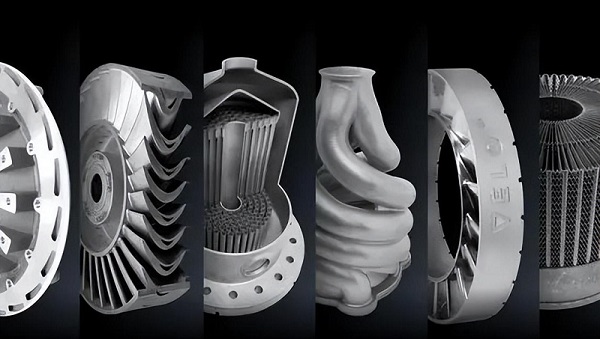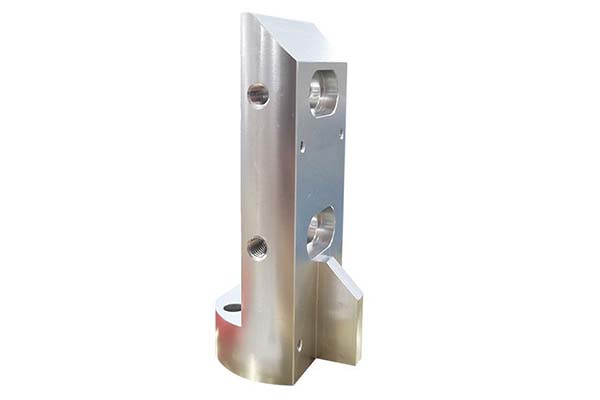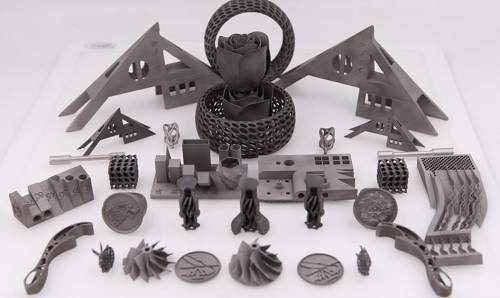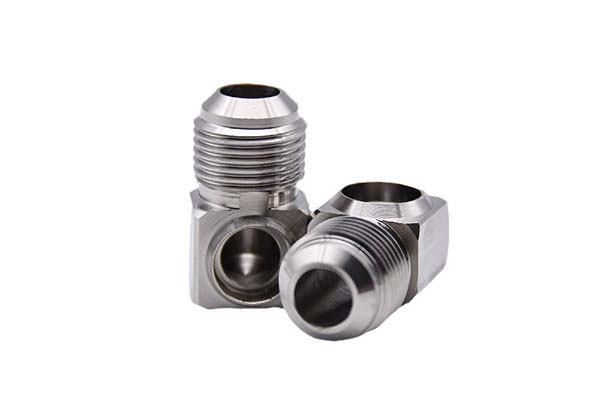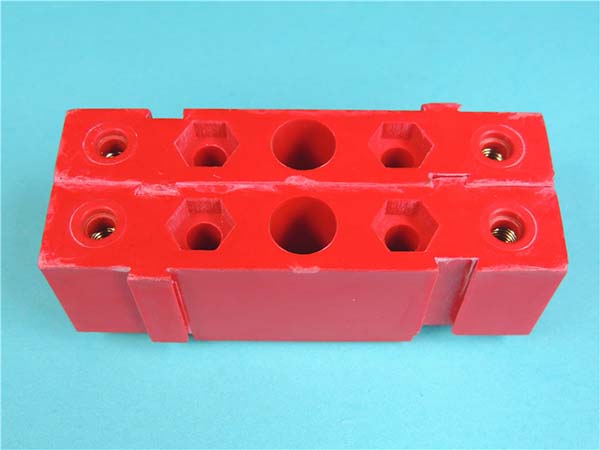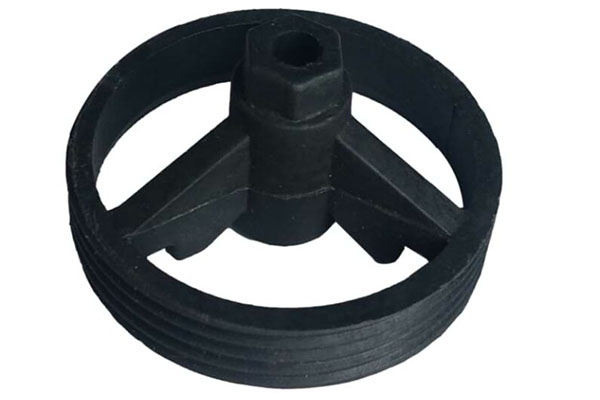Plastic 3D printing, also known as additive manufacturing, is transforming custom manufacturing by offering a host of benefits that streamline the production process, reduce costs, and open up new possibilities for innovation. This technology builds objects layer by layer from digital designs, allowing businesses to create highly customized products without the need for traditional, expensive tooling or molds. Here's a comprehensive overview of how plastic 3D printing is revolutionizing custom manufacturing.
Introduction to Plastic 3D Printing
Plastic 3D printing, a form of additive manufacturing, creates three-dimensional objects by building them layer by layer from digital files. Unlike traditional manufacturing methods, which often involve subtracting material from a larger block (e.g., milling or machining), 3D printing adds material in successive layers. This process allows for complex shapes and structures that are difficult or impossible to achieve with traditional methods.
There are several types of plastic 3D printing technologies, each with its own set of capabilities and applications:
- Fused Deposition Modeling (FDM): A widely used, cost-effective method where a thermoplastic filament is heated and extruded layer by layer.
- Stereolithography (SLA): Uses a UV laser to cure photopolymer resin, creating parts with a smooth finish and high precision.
- Selective Laser Sintering (SLS): A laser sinters powdered plastic to form solid parts, useful for producing strong, functional prototypes and end-use parts.
- Polyjet Printing: Jettisons photopolymer resins to create detailed parts with multiple materials and colors.
Each of these methods offers unique advantages depending on the requirements of the project, including material properties, precision, and the complexity of the part being produced.
Benefits of Plastic 3D Printing
Plastic 3D printing has dramatically changed the landscape of custom manufacturing by providing several critical advantages:
1. Rapid Prototyping
One of the most powerful benefits of 3D printing is its ability to create rapid prototypes. Designers can quickly turn their digital models into physical objects, which can be tested, refined, and iterated upon in a fraction of the time compared to traditional prototyping methods. This quick turnaround speeds up the product development cycle and allows for faster decision-making, reducing time-to-market for new products.
2. Cost-Effectiveness
Plastic 3D printing is highly cost-effective, particularly for low-volume production runs. Traditional manufacturing methods like injection molding require expensive molds and tools, which make them unsuitable for small batches or custom parts. In contrast, 3D printing doesn’t require tooling, which significantly lowers upfront costs. Moreover, since parts can be printed on demand, there is a reduction in inventory costs and material waste.
3. Design Flexibility and Complexity
3D printing opens up a world of design flexibility. Unlike traditional methods that are constrained by the limitations of tooling, 3D printing can handle complex geometries and internal structures that would be challenging to produce with other methods. Designers can create intricate parts with lightweight lattice structures, organic shapes, or features such as internal channels, all of which can optimize part performance without adding complexity to the manufacturing process.
4. Customization
Plastic 3D printing offers unparalleled opportunities for mass customization. Businesses can easily produce products tailored to individual specifications, such as personalized medical devices, custom automotive parts, or bespoke consumer goods. This ability to create one-of-a-kind products quickly and cost-effectively is transforming industries that rely on personalized solutions.
Applications of Plastic 3D Printing
Plastic 3D printing has found applications across numerous industries, each benefiting from its unique advantages.
Aerospace and Automotive
In the aerospace and automotive industries, lightweight and strong parts are essential for improving performance and efficiency. 3D printing enables the production of complex, lightweight components that reduce overall weight, improving fuel efficiency and performance. For example, aerospace companies use 3D printing to create turbine blades, air ducts, and other critical parts with high strength-to-weight ratios.
Medical and Healthcare
In healthcare, 3D printing is revolutionizing the creation of custom prosthetics, implants, and surgical guides. Plastic 3D printing allows for parts tailored to a patient’s exact specifications, improving the fit and functionality of medical devices. For example, dental implants and aligners can be quickly manufactured to suit individual patients, offering better comfort and effectiveness.
Consumer Goods
From fashion accessories to home decor, consumer goods manufacturers are leveraging 3D printing to produce highly customized and unique products. Designers can produce intricate, personalized items like jewelry, shoes, and household items in a range of materials and colors. The ability to create small runs of bespoke products is revolutionizing the consumer goods market, allowing companies to meet the growing demand for personalized products.
Prototyping and Product Development
In traditional manufacturing, prototypes are often created using expensive molds and tooling, which can be time-consuming and costly. 3D printing has eliminated the need for these costly upfront investments, making rapid prototyping more accessible. With plastic 3D printing, prototypes can be designed, tested, and refined much more quickly and cost-effectively.
This allows companies to iterate on designs, identify flaws early, and refine their products before committing to full-scale production. Additionally, 3D printing can create functional prototypes that simulate real-world conditions, allowing engineers and designers to test parts for fit, strength, and performance before production begins.
Advantages Over Traditional Manufacturing
When compared to traditional manufacturing methods, plastic 3D printing offers several key advantages:
1. Cost and Time Efficiency
By eliminating the need for molds and tooling, 3D printing drastically reduces both upfront costs and production time. In traditional manufacturing, a complex part may require weeks or months to produce due to tooling setup times. With 3D printing, a part can be designed and printed within hours or days, greatly reducing lead times.
Additionally, the ability to produce parts on-demand means businesses can avoid holding large inventories, thus reducing storage and inventory management costs.
2. Design Flexibility
3D printing allows for the creation of complex and customized designs that would be challenging, if not impossible, to achieve with traditional methods. Traditional manufacturing relies on molds and machines that are limited in the shapes they can produce. In contrast, 3D printing offers freedom in design, enabling intricate geometries, internal cavities, and even highly optimized lattice structures.
This flexibility opens new possibilities for engineers and designers to innovate and push the boundaries of traditional design principles.
Case Studies and Success Stories
Aerospace Industry: NASA
NASA has utilized 3D printing to create components for space missions, including parts for the Curiosity Rover. The ability to manufacture lightweight and durable components that can withstand extreme environments has made 3D printing a crucial technology in space exploration. This capability is not just limited to prototyping but extends to the production of end-use components as well.
Medical Field: SmileDirectClub
SmileDirectClub, a company specializing in teeth alignment, uses 3D printing to produce custom aligners for patients. The process allows for rapid production and a personalized fit, improving patient outcomes while reducing the time and cost typically associated with orthodontic treatments. 3D printing enables SmileDirectClub to offer customized dental products efficiently and at scale.
Automotive Sector: Ford Motor Company
Ford has incorporated 3D printing into its manufacturing process to produce custom tooling and parts. By using 3D printing to create specialized fixtures and tools, Ford has reduced manufacturing time and costs, allowing for quicker iterations and faster development cycles for new models.
Real-world Applications
Beyond these well-known examples, plastic 3D printing has a wide array of real-world applications in various sectors:
Architecture and Construction
Architects and engineers use 3D printing to create detailed architectural models, and there are even initiatives exploring the possibility of printing entire buildings. In construction, 3D printing is seen as a way to reduce costs, speed up construction, and enable innovative architectural designs.
Education and Research
Educational institutions leverage 3D printing to teach students about design, engineering, and manufacturing. Researchers are using the technology to explore new materials, refine manufacturing processes, and develop innovative solutions across a variety of industries.
Art and Design
Artists and designers are increasingly using 3D printing to create custom sculptures, jewelry, and interactive art pieces. This technology allows for a level of creativity and precision previously unavailable, transforming the way art is conceived and produced.
Industry Impact and Growth
Plastic 3D printing is having a profound impact on the custom manufacturing industry. As the technology matures, its applications and potential continue to grow. It has enabled businesses to innovate quickly, reduce costs, and enhance product quality. Industries are increasingly adopting 3D printing to meet the growing demand for personalized products and complex designs that are both cost-effective and time-efficient.
In conclusion, plastic 3D printing services are revolutionizing custom manufacturing by offering rapid prototyping, cost-efficiency, design flexibility, and the ability to create highly complex and personalized parts. This technology empowers companies to innovate, reduce costs, and stay competitive in an ever-evolving marketplace.
FAQs
- What are the main benefits of plastic 3D printing over traditional manufacturing methods?
- Plastic 3D printing offers rapid prototyping, cost-effectiveness, especially for low-volume production, and design flexibility. It allows the creation of complex geometries without costly molds or tools, reducing both production time and inventory costs.
- How does 3D printing impact product development and innovation?
- 3D printing accelerates product development by enabling fast prototyping and iteration. It allows for complex designs and innovation that would be challenging or impossible with traditional manufacturing methods, leading to optimized products.
- What industries benefit most from plastic 3D printing?
- Key industries benefiting from plastic 3D printing include aerospace, automotive, medical, consumer goods, architecture, education, and art. Each sector leverages the technology for customized solutions, complex parts, and cost-effective production.

